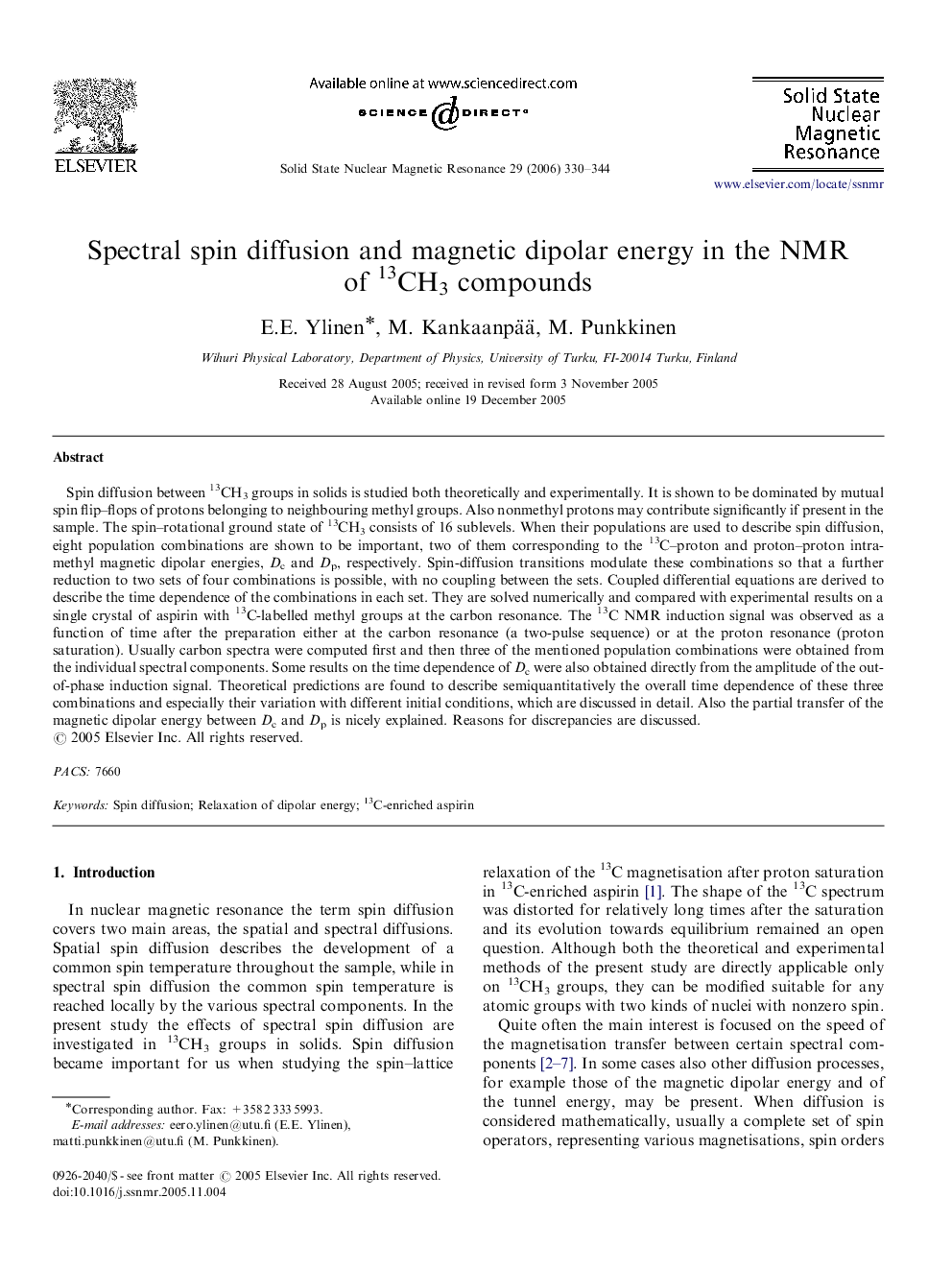| Article ID | Journal | Published Year | Pages | File Type |
|---|---|---|---|---|
| 5420961 | Solid State Nuclear Magnetic Resonance | 2006 | 15 Pages |
Abstract
Spin diffusion between 13CH3 groups in solids is studied both theoretically and experimentally. It is shown to be dominated by mutual spin flip-flops of protons belonging to neighbouring methyl groups. Also nonmethyl protons may contribute significantly if present in the sample. The spin-rotational ground state of 13CH3 consists of 16 sublevels. When their populations are used to describe spin diffusion, eight population combinations are shown to be important, two of them corresponding to the 13C-proton and proton-proton intra-methyl magnetic dipolar energies, Dc and Dp, respectively. Spin-diffusion transitions modulate these combinations so that a further reduction to two sets of four combinations is possible, with no coupling between the sets. Coupled differential equations are derived to describe the time dependence of the combinations in each set. They are solved numerically and compared with experimental results on a single crystal of aspirin with 13C-labelled methyl groups at the carbon resonance. The 13C NMR induction signal was observed as a function of time after the preparation either at the carbon resonance (a two-pulse sequence) or at the proton resonance (proton saturation). Usually carbon spectra were computed first and then three of the mentioned population combinations were obtained from the individual spectral components. Some results on the time dependence of Dc were also obtained directly from the amplitude of the out-of-phase induction signal. Theoretical predictions are found to describe semiquantitatively the overall time dependence of these three combinations and especially their variation with different initial conditions, which are discussed in detail. Also the partial transfer of the magnetic dipolar energy between Dc and Dp is nicely explained. Reasons for discrepancies are discussed.
Keywords
Related Topics
Physical Sciences and Engineering
Chemistry
Physical and Theoretical Chemistry
Authors
E.E. Ylinen, M. Kankaanpää, M. Punkkinen,
